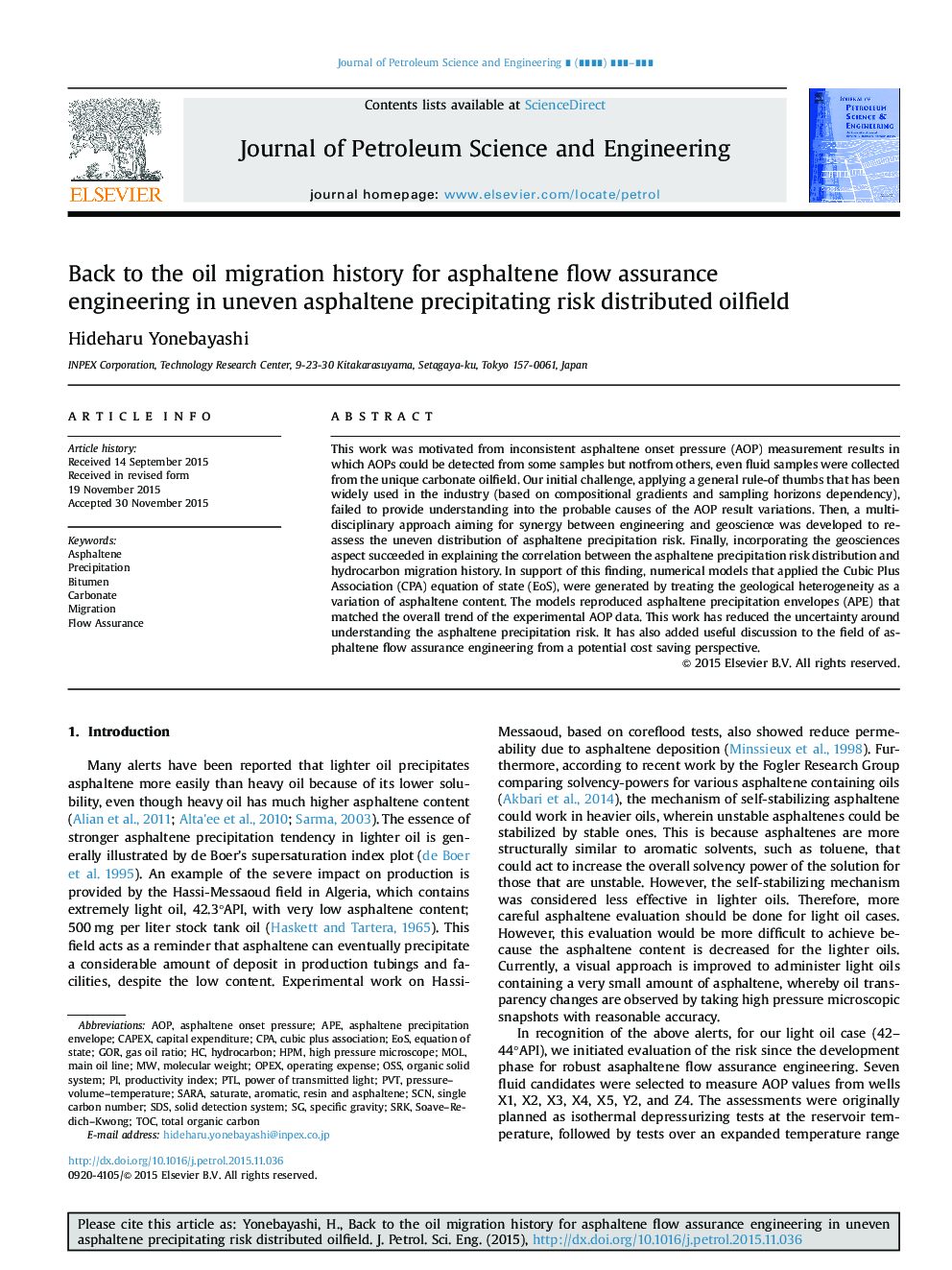| Article ID | Journal | Published Year | Pages | File Type |
|---|---|---|---|---|
| 8126298 | Journal of Petroleum Science and Engineering | 2016 | 10 Pages |
Abstract
This work was motivated from inconsistent asphaltene onset pressure (AOP) measurement results in which AOPs could be detected from some samples but not from others, even fluid samples were collected from the unique carbonate oilfield. Our initial challenge, applying a general rule-of thumbs that has been widely used in the industry (based on compositional gradients and sampling horizons dependency), failed to provide understanding into the probable causes of the AOP result variations. Then, a multidisciplinary approach aiming for synergy between engineering and geoscience was developed to re-assess the uneven distribution of asphaltene precipitation risk. Finally, incorporating the geosciences aspect succeeded in explaining the correlation between the asphaltene precipitation risk distribution and hydrocarbon migration history. In support of this finding, numerical models that applied the Cubic Plus Association (CPA) equation of state (EoS), were generated by treating the geological heterogeneity as a variation of asphaltene content. The models reproduced asphaltene precipitation envelopes (APE) that matched the overall trend of the experimental AOP data. This work has reduced the uncertainty around understanding the asphaltene precipitation risk. It has also added useful discussion to the field of asphaltene flow assurance engineering from a potential cost saving perspective.
Keywords
CPAGORSCNHPMAPEAOPCAPEXPVTCubic plus associationGas oil ratioPTLTOCSRKOPEXAsphaltene onset pressureSDSAsphalteneFlow assuranceOSSPrecipitationSARAproductivity indexEOspressure–volume–temperatureBitumenEquation of stateMigrationMolCapital expenditurehydrocarbonSpecific gravityMolecular weightCarbonateTotal organic carbon
Related Topics
Physical Sciences and Engineering
Earth and Planetary Sciences
Economic Geology
Authors
Hideharu Yonebayashi,
